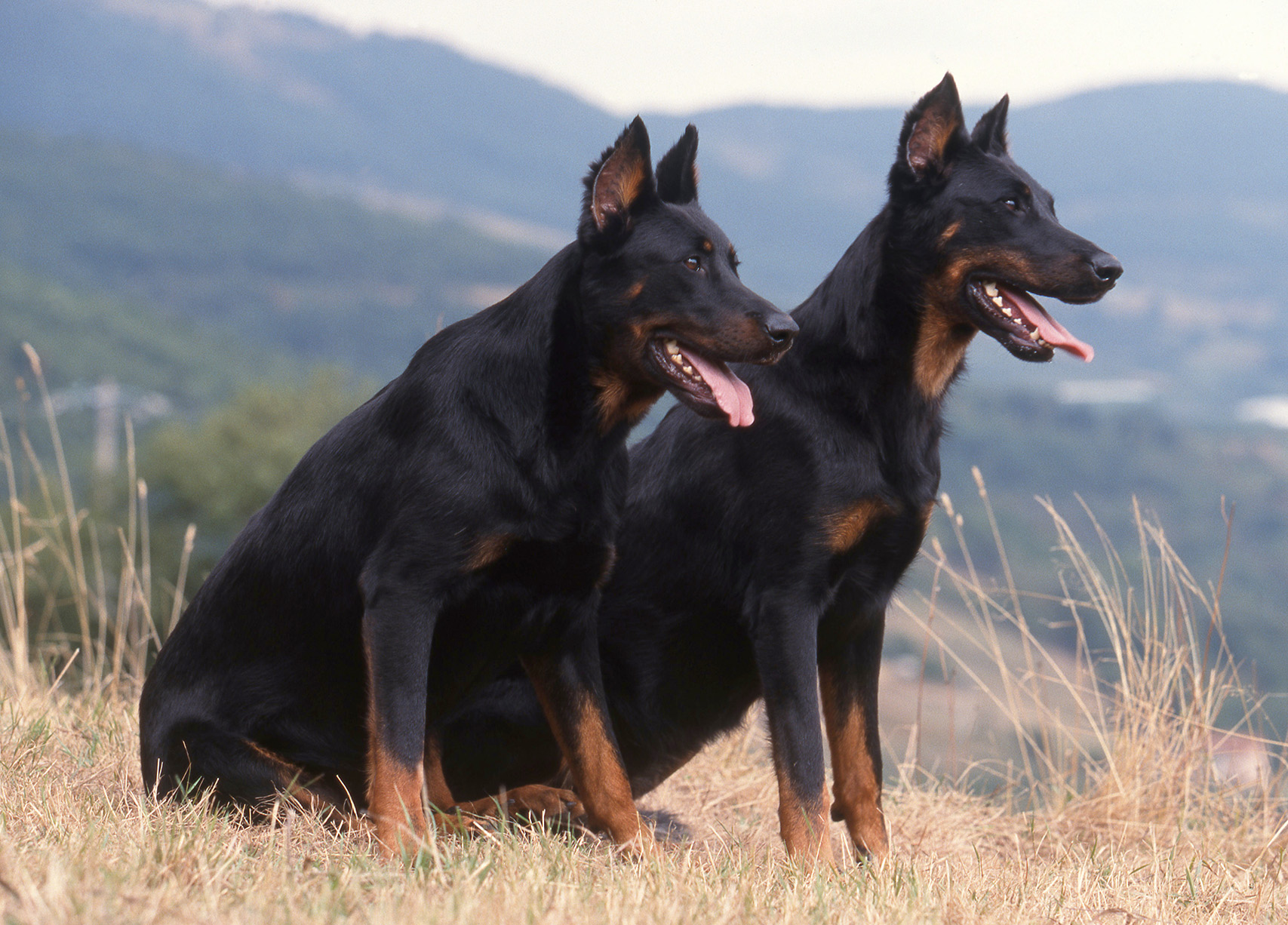Beauceron

Description
The Beauceron is a large, powerful herding dog breed from France, known for its intelligence, loyalty, and versatility. Often called the "French Shepherd," the Beauceron was originally bred to herd and guard livestock, and it has a muscular build, short coat, and distinctive black-and-tan markings, sometimes with subtle rust-colored accents. Some Beaucerons also have a unique double dewclaw on their hind legs, a trait associated with the breed.
These dogs are highly trainable and excel in a variety of roles beyond herding, including search and rescue, protection work, and competitive dog sports. Beaucerons are known for their protective nature and strong bond with their families, making them devoted companions as well as effective guard dogs. They are typically reserved with strangers but are affectionate and gentle with their family members.
Due to their intelligence and high energy levels, Beaucerons thrive in active households with experienced handlers who can provide consistent training, socialization, and regular physical and mental stimulation. With the right environment and guidance, the Beauceron is a loyal, versatile, and hardworking companion well-suited to active and structured lifestyles.
History
The Beauceron, also known as the Berger de Beauce or Bas Rouge (“red stockings” in French), is a herding and guard dog with centuries-old roots in the rural plains of northern and central France. The breed’s origins are not precisely documented, but it’s generally agreed that the Beauceron developed from local French pastoral dogs, selectively bred to manage large flocks of sheep and guard homesteads. References to dogs resembling the Beauceron date back as far as the 16th century, and by the 19th century, these robust, versatile canines had become a fixture in French agriculture.
The breed took on a more defined identity toward the late 1800s. In 1896, the Société Centrale Canine (French Kennel Club) began formally differentiating two types of French herding dogs: the long-coated Briard (Berger de Brie) and the short-coated Beauceron (Berger de Beauce). The Beauceron was prized for its keen intelligence, enduring stamina, and protective instincts. Its nickname, Bas Rouge, refers to the striking red markings on its lower legs. Beyond herding sheep, Beaucerons often served as guardians for farmsteads and livestock, a role that capitalized on their strong protective drive and imposing presence.
During the World Wars, the Beauceron found additional purpose in the French military, acting as a messenger, rescue, and sentry dog. Their bravery, loyalty, and trainability made them invaluable under fire, and these wartime efforts helped earn the breed national recognition. Even as the number of working farms in France declined over the 20th century, dedicated breed enthusiasts continued to preserve the Beauceron’s original capabilities. The breed was exported to other countries, where it gained modest popularity among those seeking a diligent herding or protection dog.
Today, the Beauceron remains relatively rare outside its homeland but has a growing following around the world. It is recognized by major kennel clubs, including the American Kennel Club (AKC) in 2007. Whether herding livestock, participating in dog sports like obedience and agility, or serving as a devoted family companion, the Beauceron exemplifies a proud French heritage, embodying centuries of versatility, intelligence, and unwavering loyalty.
Colors
• Black & Rust
• Black & Tan
• Gray Black & Tan
• Harlequin
• Tricolored


